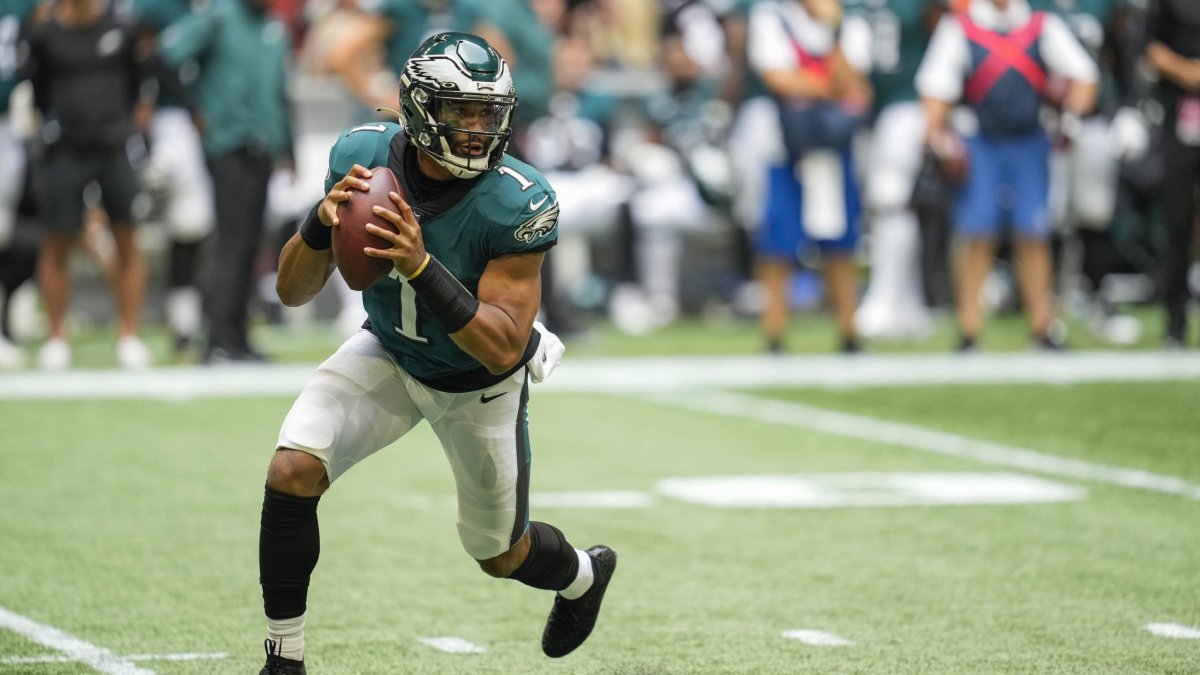This offseason, I unveiled my method of ranking NFL quarterbacks by accounting for their career performances in a unique and properly weighted way. I called it PFF’s analytical quarterback rankings.
The analysis used the best advanced stats available to judge quarterback play and properly weighed the confidence we should have in a quarterback’s performance based on their sample size.
Click here for more PFF tools:
Rankings & Projections | WR/CB Matchup Chart | NFL & NCAA Betting Dashboards | NFL Player Props tool | NFL & NCAA Power Rankings
I will apply the same framework to quarterbacks throughout the 2021 season, keeping an eye on how each quarterback’s current-year performance aligns with our best estimate for his skill level based on his entire career.
Even in a single season, there can be drastic differences in sample sizes for quarterbacks. This means that comparing unadjusted rate stats side by side can give too much credit to those who aren’t a big part of their offense and too little credit for those who dominate as their team's No. 1.
I utilize a statistical technique called Bayesian Updating to solve the sample size issues. It is a method PFF has used many times in the past, notably when we looked at a number of different draft classes, why the New York Jets needed to draft a quarterback in 2021 and whether Carson Wentz had much to offer a new team in 2021.
With Bayesian Updating, we can use the dynamics of the historical quarterback market and individual results to project their PFF grades and expected points added (EPA) per play.
You can find details of how Bayesian Updating is implemented here, including a primer on how we build a posterior belief (or projection) based on historical quarterback results and then update the beliefs (projections) for each quarterback with their actual NFL results on a play-by-play basis.
We used these projections to forecast MVP probabilities last offseason, identifying Green Bay Packers quarterback Aaron Rodgers as a strong value bet.
CONTEXTUALIZE 2021 PERFORMANCE
Before I dive straight into the PFF analytical quarterback rankings through Week 1, I’ve provided some visualizations to give proper context to how these quarterbacks performed in PFF grade and EPA per play and some important data splits that show the potential for regression moving forward.

We see that Jameis Winston led all NFL quarterbacks in both measures in Week 1. His EPA efficiency was much higher versus his grading than you’d expect by his historical trend line, and Tom Brady fell on the opposite side. Other highly productive quarterbacks in Week 1 included Matthew Stafford, Teddy Bridgewater and Jalen Hurts.
What you don’t see in this comparison is how often each quarterback was asked to make a play, which ranged from as few as 18 times to as many as 63 times. The effects of those sample size differences will become apparent in the rankings below.



 © 2024 PFF - all rights reserved.
© 2024 PFF - all rights reserved.